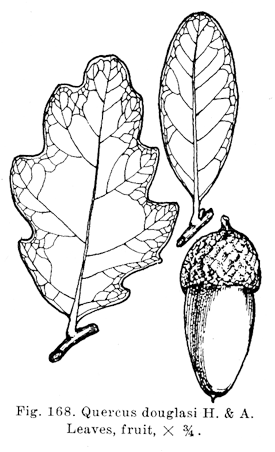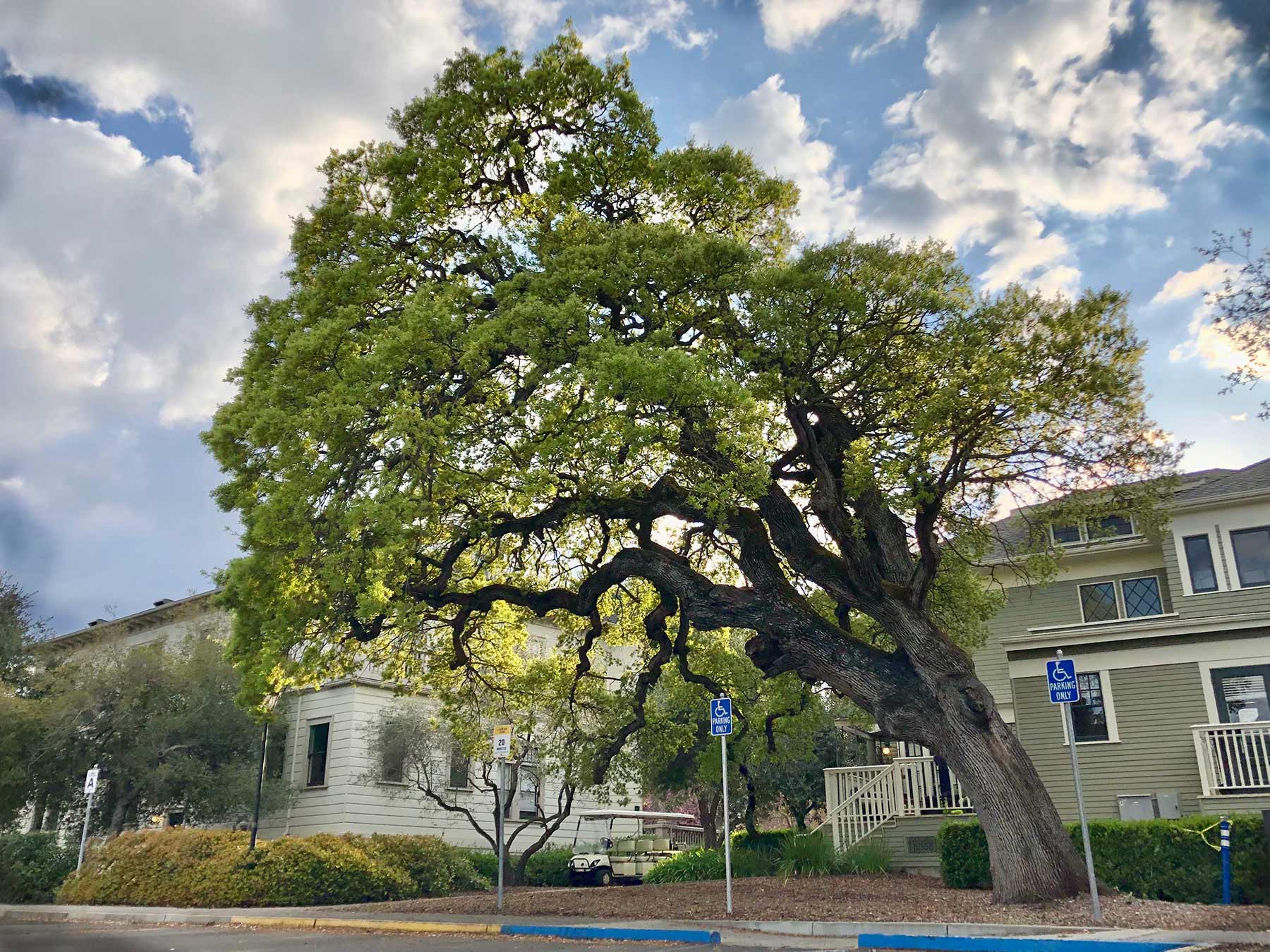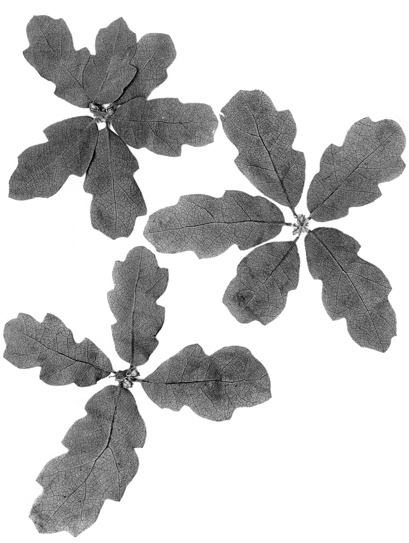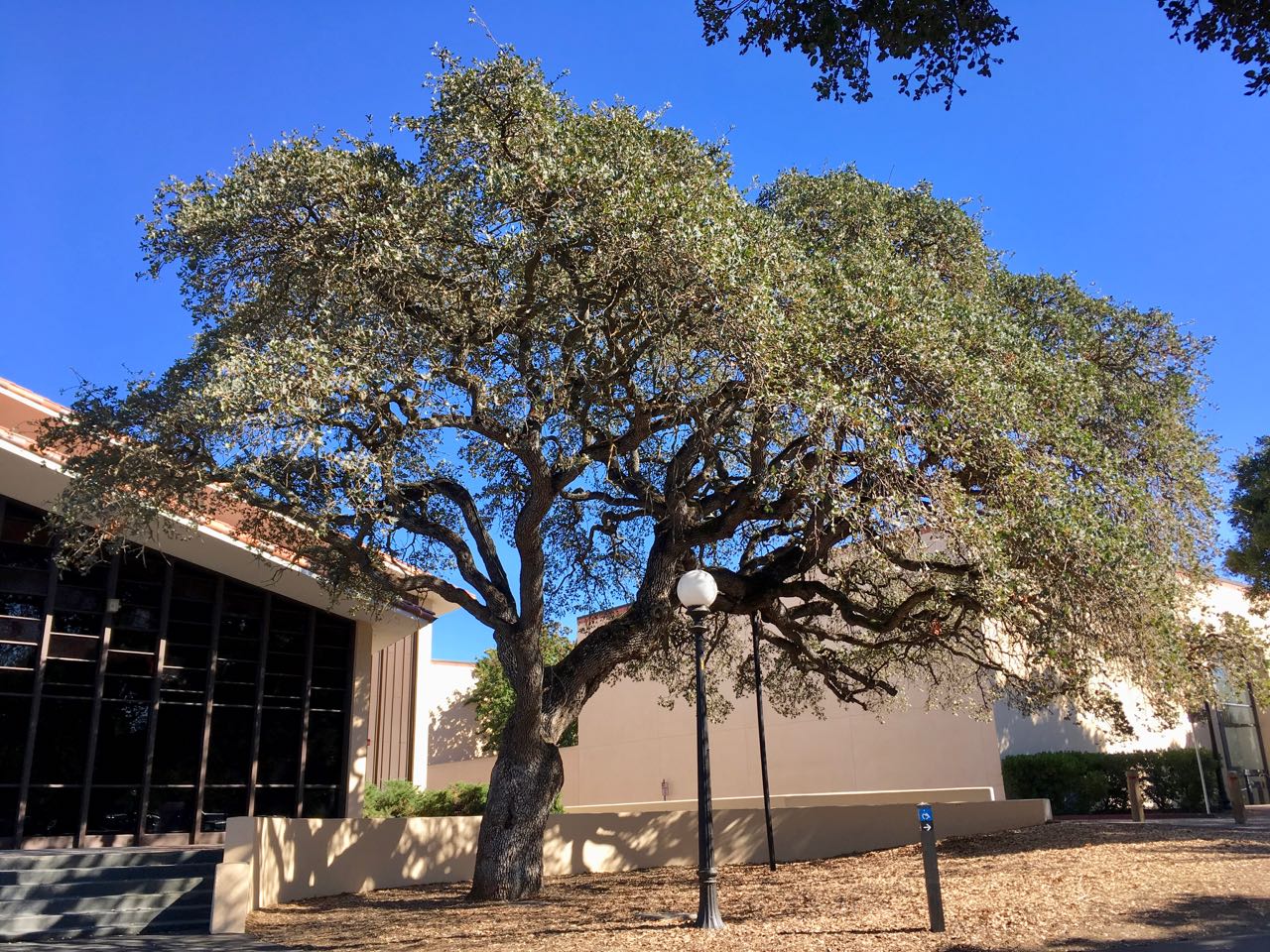Quercus douglasii
 blue oak
blue oak
Native in the immediate vicinity of campus, the deciduous blue oak grows along with coast live oak and valley oak. The leaves are noticeably bluegreen and are lobed shallowly, if at all. Off Santa Teresa Street, there is a parking lot in front of Roble Hall carved out of an original grove of blue oak. A similar grove is up the hill where Lomita Court leaves Lomita Drive. A majestic blue oak is to the right of the Dinkelspiel Auditorium entry stairs; two large specimens at 247 and 267 Santa Teresa Lane guard the front of two faculty homes opposite Governor’s Corner. More blue oaks are in the Tresidder Union parking lot across from the Faculty Club, and they dot the native landscape between Campus Drive West and Sand Hill Road.
Sometimes the leaves of blue oak are lobed so as to resemble valley oak (Q. lobata), but in such cases the dome-shaped habit and modest height (around 40 feet) clearly differentiates it from the more irregularly picturesque and often gigantic valley oak. It is named after David Douglas (see also Pseudotsuga menziesii, syn. Pseudotsuga douglasii).

Illustrations: wasp gall Antron echinus on blue oak leaf, Jasper Ridge | Jasper Ridge plant photo archive.
About this Entry: The main text of this entry is from the book Trees of Stanford and Environs, by Ronald Bracewell, published 2005. All locations verified Apr 2021 (SP); though the Roble Hall parking lot has had Windhover & Meier hall built on it since Bracewell wrote this, more than a dozen blue oaks still remain.






